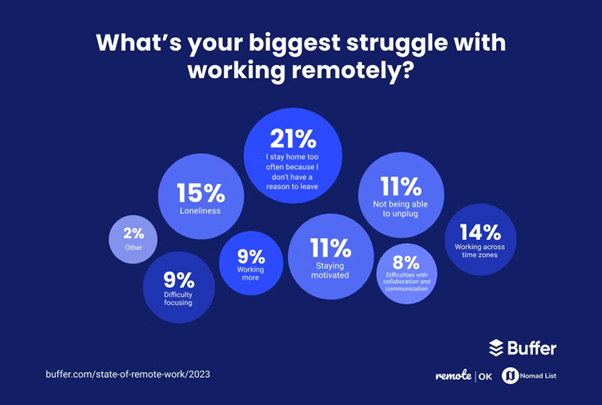You've heard of user-generated content, but how about employee-generated content?
Of all the types of content at your disposal, employee-generated content (EGC) is the most effective at simultaneously building your brand's authenticity, attracting new talent, boosting job satisfaction, and driving social engagement.
It not only fosters a culture that values the opinions of its employees but also communicates that culture of integrity to the masses.
Why is it so effective?
Because customers and jobseekers alike trust all types of user-generated content—including employee-generated—more than the content produced by your brand.
So, what exactly is employee-generated content, what are its specific benefits, and how do you encourage employees to create it?
What is employee-generated content?
Employee-generated content refers to content created by your employees rather than content created by your brand. It can include anything from blog and social media posts to behind-the-scenes videos and livestreams.
It primarily focuses on communicating your company's culture and integrity.
Let's say some of your employees band together to create a video about what it's like to work at your company, or maybe they write an article about your latest achievement or post a photo of themselves on LinkedIn celebrating their employment anniversary. Those are all examples of EGC.
What's the difference between UGC and EGC?
You can't mention EGC without UGC. User-generated content refers to any content that advocates for your brand but isn't created by your business.
So, besides employee-generated content it also includes content created by customers and influencers. Think of EGC as a specific form of UGC.
What are the benefits of employee-generated content?
Employee-generated content has far-reaching benefits, from building brand trust and authenticity to attracting high-quality talent and establishing company culture.
Here are the four main reasons you should incorporate it into your content development strategy.
1. EGC fosters a sense of community in the workplace
Despite the benefits of remote working, there's no denying that the digital workspace restricts workplace culture and community building. Without the opportunity to engage in spontaneous water-cooler conversations, employees find it much harder to forge work relationships.
In fact, loneliness is the biggest challenge for 15% of remote workers.

Source: Buffer
Alongside HR tools, such as communication software, employee-generated content provides opportunities for employee connection.
Collaborating on EGC gives employees the chance to connect with their colleagues on a personal level, in a more laid-back environment. They can exchange ideas, give advice, and share their experiences.
With better relationships forged, employees can collaborate more effectively on work projects and establish a sense of community spirit.
2. EGC boosts employee engagement and satisfaction
Employee-generated content gives staff a platform to voice their opinions. When those opinions are heard, recognized, and valued by employers, employee's motivation to engage with their work gets a boost, as does overall job satisfaction.
That's particularly true for industries and roles with high employee turnover, such as hospitality and call centers. Call center management, for example, can quickly become overwhelming. Managers need to empower and motivate agents to perform to a consistently high standard in the face of monotony and other call center challenges.
By not only encouraging EGC but actively listening to and acting on staff feedback, you can create an employee-first work environment that boosts satisfaction and retention.
The knowledge-sharing aspect of EGC can also fuel employees to engage more with learning and development. It opens the doors for cross-departmental collaboration, enabling workers with different skill sets and expertise to share knowledge and experiences. That encourages continual learning, improving job satisfaction as well as cross-departmental and hierarchical relationships.
3. EGC drives employee advocacy
Employees, not just customers, can be brand ambassadors. They can advocate for your brand by sharing positive employment experiences, behind-the-scenes content, product reviews, and stories that communicate your integrity.
And because the content is created by employees rather than coming directly from you, it feels more authentic and credible to customers and prospective job seekers.
Fostering employee advocacy humanizes your brand, improving your reputation and boosting social engagement by up to 40%.
It can be fundamental to your recruitment strategy, too.
4. EGC attracts new talent
EGC drives employee advocacy and enhances your employer branding, both of which are vital to attracting new talent. Like customers, job-seekers trust recommendations from staff more than ads and branded content.
So, by encouraging employees to create and share EGC on their social platforms, you can gain access to not just the friends and family of your workers but also job seekers.
Using EGC to attract talent, Cisco was able to generate 10,000+ EGC posts, a 42% increase in new blog visitors, and thousands of social media impressions.
To manage all your new prospective candidates, you might want to consider using an HRIS system. These streamline talent acquisition and automate your recruitment cycle, enabling you to snag high-quality talent before the competition can get to them.
How do you encourage employees to share content?
Communicating the above benefits to your employees can encourage them to create content, but incentives work even better. So, why not offer monetary inducement for creating high-quality content?
For example, you could offer a cash prize for the best blog post or behind-the-scenes video. You might even offer bonuses for consistent engagement, motivating employees to like, share, and comment on their colleague's content. (Monetary incentives can be managed with payroll software, automating data entry and calculations to ensure employees get paid exactly what they're owed right on time.)
Of course, incentives don't have to be financial. Public shoutouts, office parties, and other nonmonetary benefits can also motivate employees to engage with your EGC initiatives.
* * *
If you thought your employees couldn't get more valuable, think again. Employee-generated content has numerous benefits that can be felt in all corners of your business.
Using incentives and education, encourage staff to create high-quality EGC that sparks conversation, fosters unity, boosts social engagement, and inspires prospective talent to apply for your next vacancy.
More Resources on Employee Content Creation
How to Elicit and Use Employee Stories in Your Content Marketing
How Employee Advocacy Can Improve Your Content Marketing Performance
Four Tips for Turning Employees Into Strategic Content Creators
Five Ways Your Own Employees Can Boost Your Marketing Content




